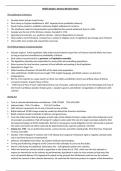Summary
Summary The loss of the American colonies, 1770-83 revision notes
- Course
- Institution
In-depth and A* quality notes on everything you need to know about America for the empire section of the A-Level History course. Perfectly summarised with important facts to include in high level essays
[Show more]



